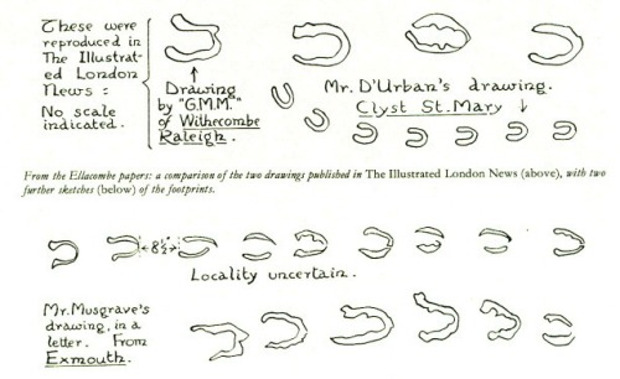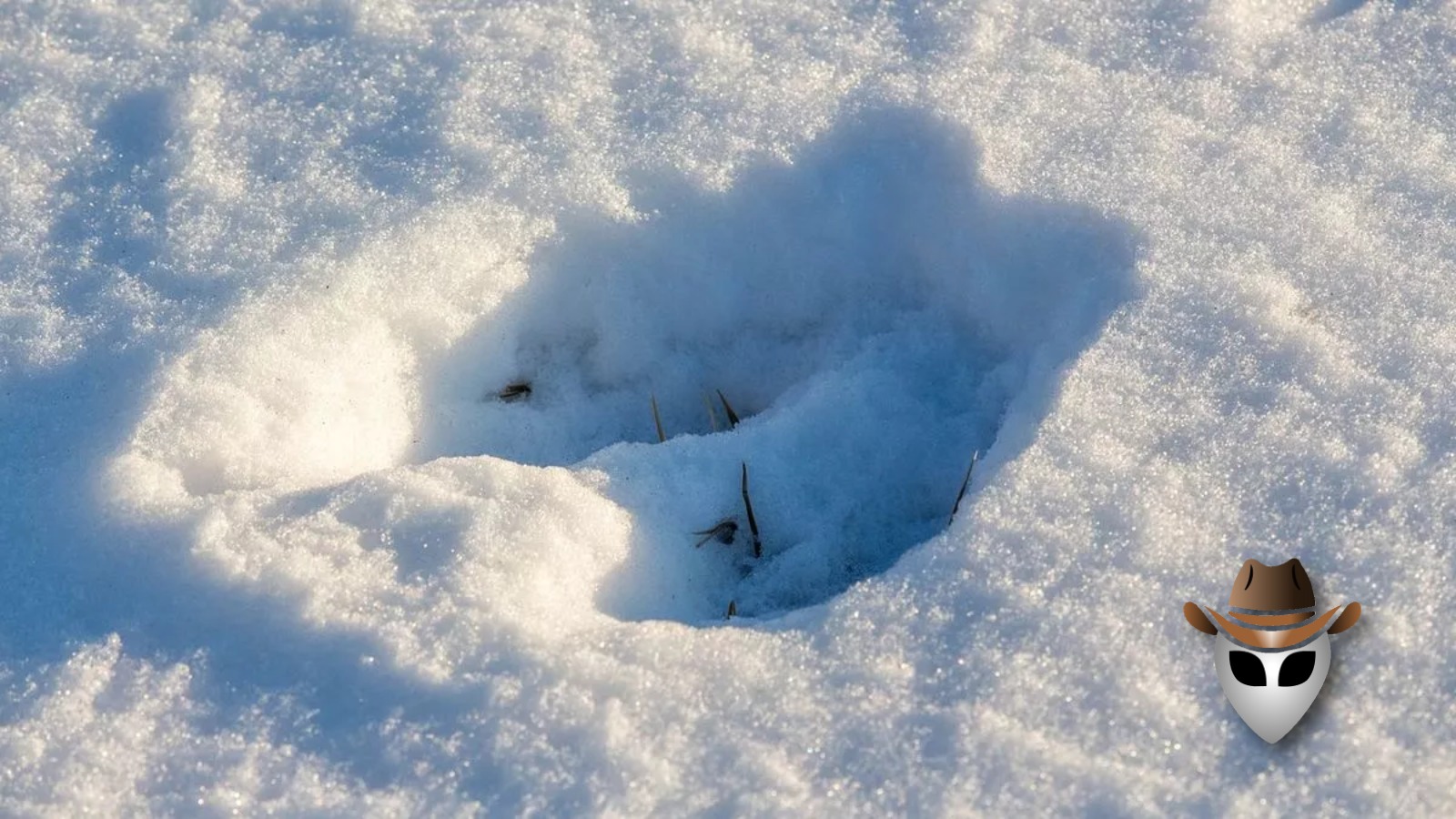In February 1855, the quaint villages of Devon, England, were gripped by a chilling mystery that has puzzled historians and paranormal enthusiasts alike for over a century and a half. Dubbed “The Devil’s Footprints,” this strange phenomenon involved a series of unexplained footprints that appeared overnight, seemingly leading through the snow from one village to another. The footprints sparked a myriad of theories, from the mundane to the supernatural.
The Evidence in Favor of the Devil’s Footprints

Unexplained Nature of the Footprints
On the morning of February 9, 1855, residents of Devon awoke to find a trail of hoof-like prints snaking through the snow, stretching over 40 miles. The footprints measured about 4 inches long and 3 inches wide, with an unusual shape that many claimed resembled that of a cloven hoof. The prints appeared in a continuous line, showing no indication of a source. They traveled across various terrains, including fields, roads, and even over a river, which added to the perplexity of the situation. Witnesses reported that the footprints appeared to lead toward a church, a cemetery, and various homes, raising eyebrows about their possible infernal origins.
Eyewitness Accounts
The accounts of those who witnessed the footprints have contributed to the legend of the Devil’s Footprints. Many villagers claimed to have seen the prints leading to their homes, with some even reporting strange occurrences on the same night. Locals described feeling a sense of dread and believing that the footprints were a sign of a demonic presence in their midst. Eyewitness accounts from the time suggest that people were genuinely fearful, with some attributing the phenomenon to the Devil himself, thus fueling speculation about supernatural involvement.
Historical Context and Folklore
During the 19th century, England was steeped in superstition and folklore. The idea of the Devil wandering the earth was not far-fetched for many. The footprints fit neatly into existing narratives about witchcraft and demonic entities. The association of the footprints with the Devil can be seen as a reflection of the cultural context of the time, which is significant in understanding why the phenomenon gained traction. Reports of strange occurrences and local folklore surrounding the Devil created a fertile ground for speculation, making the footprints seem like a natural manifestation of societal fears.
The Evidence Against
Logical Explanations
Despite the supernatural explanations, many skeptics argue that the footprints can be attributed to more earthly causes. Some believe they may have been made by a common animal, such as a donkey or a goat, that wandered through the area. The size and shape of the prints, while peculiar, do not necessarily point to a demonic source. Additionally, some researchers have suggested that the prints could have resulted from a prank, considering that mischief-making was not uncommon among local youths.
The Discrepancy in Footprint Size
Critics of the paranormal explanation point out that the size of the footprints, while unusual, does not definitively indicate a supernatural origin. Some have argued that the footprints could have been distorted by the snow, making them appear larger or differently shaped than they were. The potential for misinterpretation of the prints could easily lead to exaggerated claims about their otherworldly nature.
Lack of Sustained Evidence
One of the most significant arguments against the supernatural interpretation is the lack of sustained evidence. After the initial sightings, the footprints did not appear again, and there were no follow-up incidents to support the idea of a continuing demonic presence in the area. The absence of further occurrences raises questions about the credibility of the original reports. Many historians note that the likelihood of a supernatural explanation diminishes without consistent evidence.
The Devil’s Footprints remain a captivating mystery in the annals of English folklore, encapsulating the intersection of fear, superstition, and curiosity. While supernatural explanations are enticing, logical reasoning and historical context offer valid alternatives that cannot be dismissed. Whether one leans toward the fantastical or the rational, the footprints continue to intrigue, reminding us of the power of folklore and the enduring human fascination with the unknown. As we ponder the enigma of the Devil’s Footprints, we are left with an age-old question: do we trust our eyes alone, or do we seek the truth beneath the surface?
Share Your Thoughts!
What do you think? Were the Devil’s Footprints real, a hoax, or something else? Leave your thoughts in the comments below!
